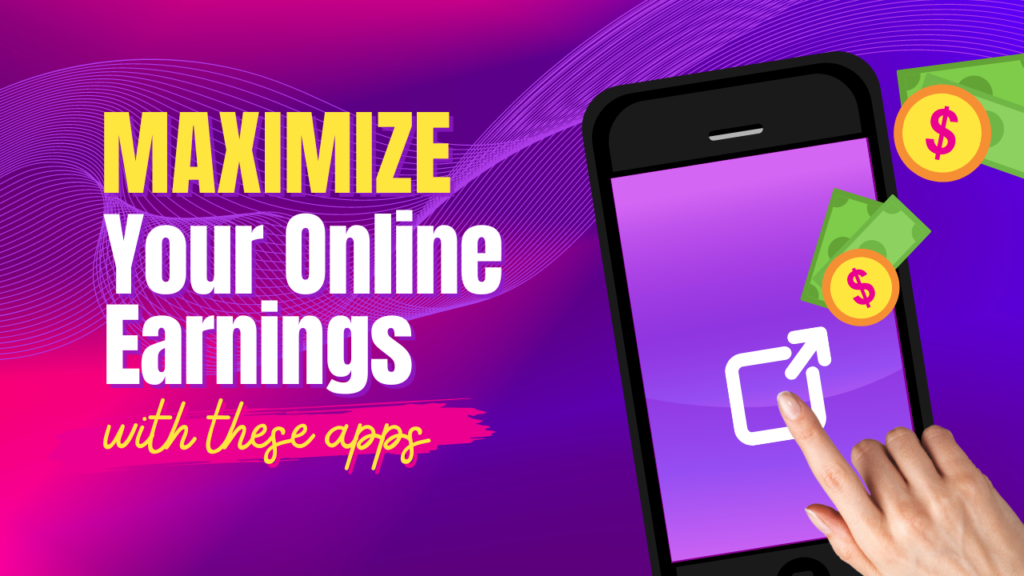Introduction to Making Money Online in 2024
The digital landscape has evolved significantly, making 2024 an exceptional year for individuals seeking to generate income online. Technological advancements, coupled with the proliferation of remote work opportunities, have transformed the way we perceive and utilize the internet for revenue generation. The rise of high-speed internet, sophisticated software tools, and platforms dedicated to freelancing, e-commerce, and content creation have democratized access to online income streams. This evolution has opened doors for people from all walks of life to explore diverse opportunities for making money online.
Remote work has become a mainstream option, allowing professionals to work from any location with a stable internet connection. Companies worldwide have adopted flexible working models, increasing demand for freelancers and remote employees. Additionally, the gig economy continues to thrive, providing numerous avenues for individuals to leverage their skills and talents. Whether it’s through freelance writing, graphic design, digital marketing, or software development, the opportunities are vast and varied.

Moreover, the rise of social media and content-sharing platforms has created new income streams for content creators. Influencers, bloggers, and YouTubers can monetize their content through sponsorships, advertisements, and affiliate marketing. E-commerce platforms like Etsy, eBay, and Amazon have also made it easier for entrepreneurs to start online businesses, giving them access to global markets with minimal upfront costs.
This comprehensive guide will delve into various methods to make money online in 2024, providing practical tips and strategies to help you navigate this dynamic landscape. From freelancing and remote work to e-commerce and content creation, we will cover the most lucrative and accessible options available. By understanding the current trends and leveraging the right tools and platforms, you can effectively tap into the online economy and achieve your financial goals.
Freelancing and Remote Work
Freelancing and remote work have become increasingly popular ways to make money online, offering flexibility and the potential for substantial income. Platforms like Upwork, Fiverr, and Freelancer provide a plethora of opportunities for individuals with various skill sets. High-demand services on these platforms include graphic design, writing, programming, and virtual assistance. Each of these fields offers unique opportunities for freelancers to showcase their talents and secure consistent work.
Creating a strong profile is crucial for success on freelancing platforms. Start by crafting a professional and detailed profile that highlights your skills, experience, and portfolio. Include a clear, high-quality profile picture and a compelling bio that succinctly describes your expertise. This helps potential clients quickly understand what you bring to the table.
Setting competitive rates is another critical aspect of freelancing. Research the market rates for your services and consider your experience level when determining your prices. While it might be tempting to set lower rates to attract clients, ensure that your pricing reflects the quality of your work and allows you to sustain a viable business. Over time, as you build your reputation and client base, you can gradually increase your rates.
Securing consistent work requires proactive effort. Regularly update your profile, showcase recent projects, and seek out client reviews and testimonials. Networking within your industry and participating in relevant online communities can also lead to new opportunities. Additionally, maintaining a high level of communication with clients, delivering quality work on time, and being responsive to feedback are essential practices for sustaining long-term relationships and securing repeat business.
Freelancing offers numerous benefits, including the ability to work from anywhere, set your own schedule, and choose projects that interest you. However, it also comes with challenges such as income instability, lack of employee benefits, and the need for self-discipline. To manage and grow a freelance business, consider diversifying your client base, setting aside savings for lean periods, continuously upgrading your skills, and possibly outsourcing administrative tasks to focus on core activities.
By strategically navigating the freelancing landscape, you can build a thriving remote work career that offers both financial rewards and personal satisfaction.
E-commerce and Dropshipping

Starting an e-commerce store is a viable way to make money online in 2024, leveraging platforms like Shopify, WooCommerce, and Amazon to streamline the process. These platforms provide user-friendly interfaces and robust support systems, making it easier for entrepreneurs to set up and manage their online stores with minimal technical expertise.
One popular e-commerce model is dropshipping. This method involves selling products without holding inventory, as the supplier ships products directly to the customer. The primary benefits of dropshipping include lower upfront costs, reduced risk, and the ability to offer a wide range of products. However, drawbacks such as lower profit margins, potential supply chain issues, and less control over product quality must be considered.
To start an e-commerce store, first choose a niche with profitable products. Conduct market research to identify trends and consumer demands. Utilize tools like Google Trends, Amazon Best Sellers, and social media insights to pinpoint high-demand items. Once you have selected your niche, find reliable suppliers through platforms like AliExpress, Oberlo, or SaleHoo. Evaluate suppliers based on their product quality, shipping times, customer service, and reviews.
Marketing your online store is crucial for driving traffic and converting visitors into customers. Employ a mix of digital marketing strategies including search engine optimization (SEO), pay-per-click (PPC) advertising, social media marketing, and email campaigns. Utilize analytics tools to monitor performance and adjust your strategies accordingly. Building a strong brand presence through engaging content and consistent communication can also foster customer loyalty.
Successful e-commerce businesses can serve as inspiration. For example, Gymshark, launched in 2012, leveraged social media influencers to grow into a multi-million dollar fitness apparel brand. Another example is ColourPop, a beauty brand that capitalized on Instagram marketing to achieve rapid growth and a loyal customer base.
By understanding the fundamentals of e-commerce and dropshipping, and applying strategic planning and marketing, aspiring entrepreneurs can capitalize on the lucrative opportunities in the online marketplace in 2024.
Affiliate Marketing
Affiliate marketing is a performance-based marketing strategy where individuals, known as affiliates, earn commissions by promoting other companies’ products or services. This is achieved through unique affiliate links that track sales and conversions. The process begins with selecting an appropriate affiliate program, which should align with your niche and audience’s interests.
Choosing the right affiliate program is crucial. Start by evaluating the commission structure, the popularity of the products, and the reputation of the company. Programs like Amazon Associates, ShareASale, and Commission Junction offer a wide range of products, making them popular choices. Once a suitable program is selected, the next step is to build a website or blog where you can create content around the products you are promoting.
Building a website or blog involves choosing a domain name, selecting a hosting service, and utilizing a content management system like WordPress. After setting up your site, focus on creating high-quality, valuable content that resonates with your audience. Product reviews, how-to guides, and comparison articles are effective content types for affiliate marketing.
Generating traffic to your website is essential for successful affiliate marketing. This can be achieved through Search Engine Optimization (SEO) and social media marketing. SEO involves optimizing your content with relevant keywords, ensuring your site is mobile-friendly, and acquiring backlinks from reputable sources. Social media platforms like Facebook, Instagram, and Pinterest can be leveraged to drive traffic by sharing engaging posts, joining relevant groups, and utilizing paid advertising.
Building trust with your audience is paramount in affiliate marketing. Transparency about your affiliate relationships and providing honest, unbiased information will help establish credibility. Trust can be further enhanced by engaging with your audience through comments, emails, and social media interactions.
The potential earnings from affiliate marketing can be substantial, but they vary depending on factors like niche, traffic volume, and conversion rates. With persistence and strategic efforts, affiliate marketing can become a lucrative online income stream.
Content Creation and Monetization
In 2024, content creation remains a lucrative avenue for making money online. Whether through blogging, YouTube, podcasting, or social media influencing, creators have numerous opportunities to monetize their content. The first step in this journey is to select a platform that aligns with your strengths and interests. For example, if you excel in writing, blogging might be your best bet. If you are comfortable in front of a camera, YouTube could be an ideal platform. Podcasting suits those who enjoy in-depth conversations, while social media influencing appeals to individuals with a knack for engaging visuals and trends.
Monetization options are abundant across these platforms. Advertising is one of the most common methods, where creators earn revenue by displaying ads on their content. For bloggers, this might mean integrating Google AdSense or other ad networks into their websites. YouTube creators can benefit from Google AdSense as well, earning money based on ad views and clicks. Podcasters often secure sponsorships where brands pay for shout-outs or ads within episodes. Social media influencers can leverage their follower base to land paid partnerships and sponsored posts.
Beyond ads and sponsorships, merchandise sales offer another robust income stream. Many creators design and sell branded merchandise, from apparel to digital products like e-books. Platforms like Teespring and Merch by Amazon simplify this process, handling production and shipping. Membership platforms such as Patreon enable creators to offer exclusive content to subscribers for a monthly fee, providing a steady income stream. Fans gain access to bonus material, early releases, and other perks in exchange for their support.
Growing an audience is crucial for maximizing these monetization strategies. Consistency in content creation, understanding your audience’s preferences, and utilizing SEO techniques are essential. Engaging with your audience through comments, social media, and live sessions can foster a loyal community. Diversifying income streams by combining various monetization methods can offer financial stability and enhance your earning potential. As the digital landscape evolves, adapting to new tools and trends will be key to sustaining success in content creation and monetization.
Online Courses and Digital Products
The market for online education and digital products has seen exponential growth, driven by the increasing demand for flexible learning options and the proliferation of internet access. To capitalize on this trend, aspiring entrepreneurs need to identify a lucrative niche. This involves researching current market demands, evaluating competition, and pinpointing gaps that your expertise can fill. Whether you are skilled in graphic design, coding, fitness training, or any other field, there is likely a segment eager to learn from you.
Creating high-quality courses or digital products is the next step. This requires meticulous planning and execution. Start by outlining your course content, breaking it down into easily digestible modules or sections. Utilize engaging multimedia elements such as videos, quizzes, and downloadable resources to enhance the learning experience. Ensure that your content is well-structured, informative, and provides real value to your audience.
Choosing the right platform to sell your online courses or digital products is crucial. Popular platforms like Udemy, Teachable, and Gumroad offer robust features for course creation, distribution, and monetization. Udemy, for instance, has a massive user base, which can provide valuable exposure for your courses. Teachable offers extensive customization options, allowing you to create a branded learning experience. Gumroad is an excellent choice for selling digital products like eBooks, templates, and software.
Effective marketing strategies are essential to drive traffic and generate sales. Utilize social media platforms, email marketing, and content marketing to reach your target audience. Collaborate with influencers or industry experts to expand your reach. Offering limited-time discounts or free trials can also attract potential customers. Additionally, collecting and leveraging customer feedback can help improve your offerings and build credibility.
Scaling your online courses and digital products involves continuous improvement and adaptation. Regularly update your content to keep it relevant and consider creating advanced courses or additional products to upsell to existing customers. By leveraging these strategies, you can generate a steady stream of passive income and establish a strong presence in the digital education market.
Investing and Trading Online
In recent years, online investing and trading have become increasingly accessible to the general public, offering a variety of avenues to generate income. From stocks and cryptocurrencies to forex and other financial assets, the opportunities are vast. However, before diving into the world of online trading, it is crucial to understand the basics and the associated risks.
To start investing online, one must first select a reliable trading platform. Popular options include platforms like Robinhood, E*TRADE, and Binance, each offering unique features tailored to different types of investors. It is important to research and choose a platform that aligns with your investment goals, provides educational resources, and ensures robust security measures.
Understanding the risks involved in online trading is paramount. The financial markets are inherently volatile, and investing without proper knowledge can lead to significant losses. Educating oneself on market fundamentals, learning technical analysis, and staying informed about market trends are essential steps to mitigate these risks. Numerous online courses and resources are available to help beginners build a strong foundation in these areas.
Responsible investing is another critical aspect to consider. It is advisable to start small and gradually increase your investment as you gain experience and confidence. Diversifying your portfolio by investing in different asset classes can also help manage risk. Additionally, setting clear financial goals and maintaining a disciplined approach can prevent impulsive decisions driven by market fluctuations.
Staying updated with market trends is essential for successful online trading. Following reputable financial news sources, subscribing to market analysis reports, and joining online communities of traders can provide valuable insights and help you make informed decisions. Utilizing tools like stock screeners, charting software, and economic calendars can further enhance your trading strategy.
In summary, online investing and trading offer lucrative opportunities, but they require careful planning, continuous learning, and disciplined execution. By understanding the basics, choosing the right platform, and staying informed, you can navigate the complexities of the financial markets and work towards achieving your financial goals.
Conclusion and Future Trends
In this comprehensive guide, we have explored various methods to make money online in 2024. From freelancing and e-commerce to affiliate marketing and content creation, the opportunities are vast and diverse. Each avenue offers unique advantages and challenges, allowing individuals to select the path that best aligns with their skills and interests.
Emerging technologies and trends are set to significantly influence the landscape of online income generation. Artificial intelligence (AI) is revolutionizing industries by automating tasks, creating new job roles, and enhancing productivity. Blockchain technology is reshaping financial transactions and data security, opening up avenues for decentralized finance (DeFi), non-fungible tokens (NFTs), and other innovative applications. The gig economy continues to expand, providing flexibility and varied opportunities for freelancers across the globe.
As we look towards the future, it is crucial to stay adaptable and continuously update one’s skill set. Embracing lifelong learning and keeping abreast of technological advancements can provide a competitive edge. Online courses, webinars, and professional networks are invaluable resources for staying informed and skilled in your chosen field.
Ultimately, making money online in 2024 requires a strategic approach, a willingness to explore multiple avenues, and an openness to evolving trends. By leveraging emerging technologies and staying committed to personal and professional growth, individuals can successfully navigate the online income generation landscape and achieve their financial goals.

